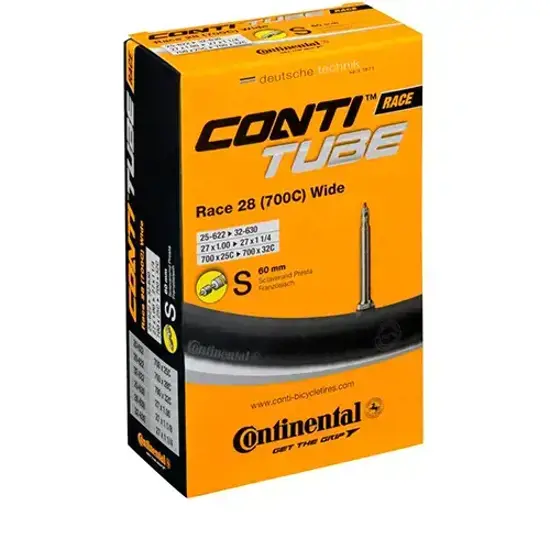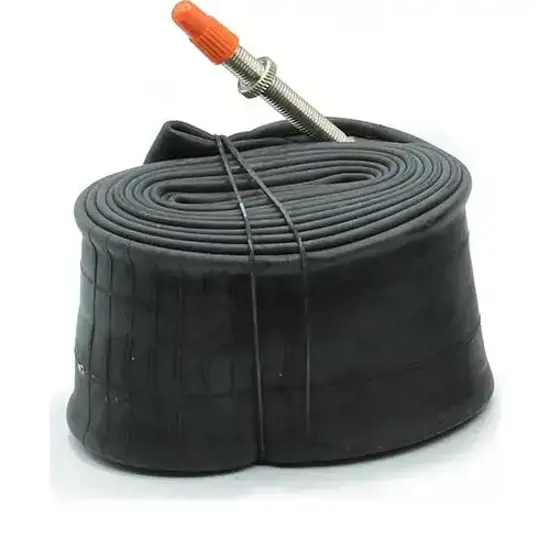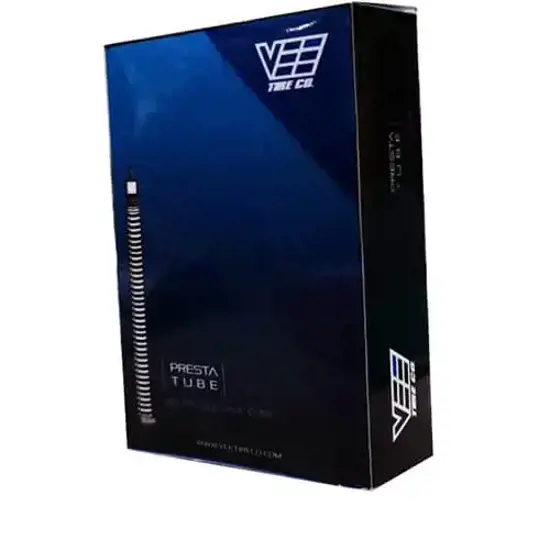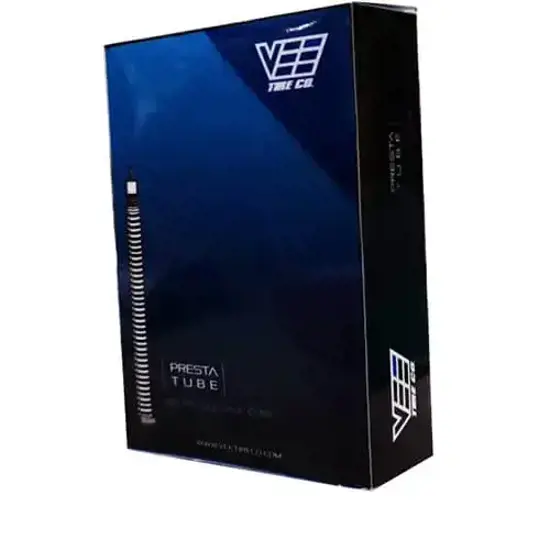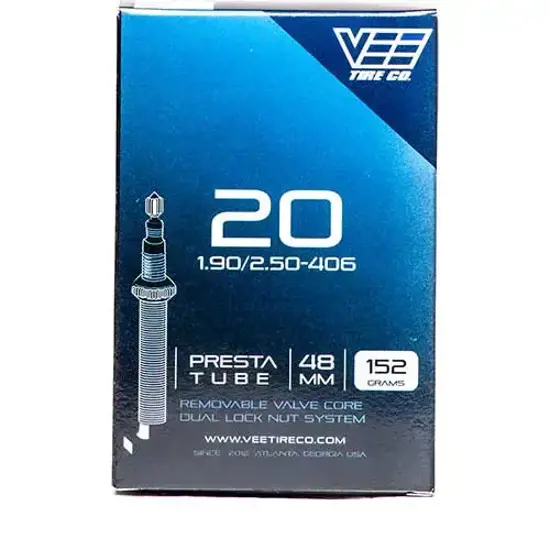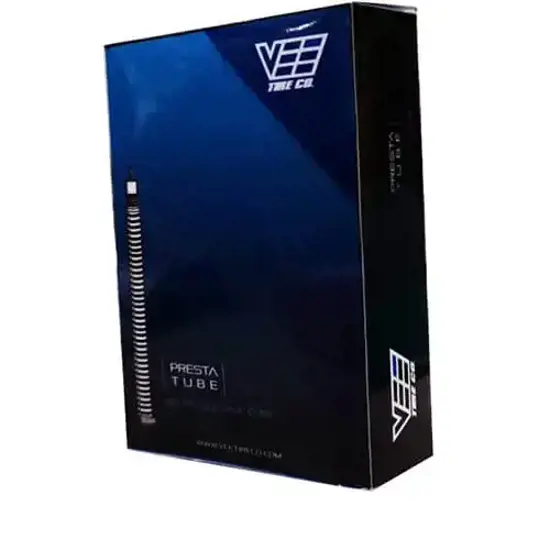Bicycle tubes
High-quality bicycle tubes at reifen.com
If you would like to expand your result list to include all products, click on the button.
-
Recommendation

![Schwalbe]() Bicycle tubesSchwalbeSV19 29 40/62-584/635Presta valve40 mm4.02 €
Bicycle tubesSchwalbeSV19 29 40/62-584/635Presta valve40 mm4.02 € -
Recommendation
![Continental Race Tube Wide 28 S60 RE 25 622 32 630 15332057]()
![Continental]() Bicycle tubesContinentalRace Tube Wide 28" S60 RE 25/32-622/630Presta valve60 mm4.81 €
Bicycle tubesContinentalRace Tube Wide 28" S60 RE 25/32-622/630Presta valve60 mm4.81 € -
Recommendation
![Maxxis WELTERWEIGHT 29x25 30 SV 36mm 15364033]()
![Maxxis]() Bicycle tubesMaxxisWELTERWEIGHT 29x2.5/3.0 SV 36mmPresta valve36 mm10.86 €
Bicycle tubesMaxxisWELTERWEIGHT 29x2.5/3.0 SV 36mmPresta valve36 mm10.86 € -
Recommendation
![MICHELIN PROTEKMAX 26 47 61 559 S48 15362539]()
![MICHELIN]() Bicycle tubesMICHELINPROTEKMAX 26" 47/61-559,S48Presta valve48 mm9.64 €
Bicycle tubesMICHELINPROTEKMAX 26" 47/61-559,S48Presta valve48 mm9.64 € -
![Vee Tire 38 44 559 AV40 26x150 175 15342806]()
![Vee Tire]() Bicycle tubesVee Tire38-44/559, AV40, 26x1.50-1.75Schrader valve40 mm2.20 €
Bicycle tubesVee Tire38-44/559, AV40, 26x1.50-1.75Schrader valve40 mm2.20 € -
![Vee Tire 40 57 507 AV40 24x150 225 15342794]()
![Vee Tire]() Bicycle tubesVee Tire40-57/507, AV40, 24x1.50-2.25Schrader valve40 mm2.62 €
Bicycle tubesVee Tire40-57/507, AV40, 24x1.50-2.25Schrader valve40 mm2.62 € -
![Vee Tire 48 60 622 AV40 29x190 235 15342809]()
![Vee Tire]() Bicycle tubesVee Tire48-60/622, AV40, 29x1.90-2.35Schrader valve40 mm2.76 €
Bicycle tubesVee Tire48-60/622, AV40, 29x1.90-2.35Schrader valve40 mm2.76 € -
![Vee Tire 50 55 406 SV40 20x190 250 15387204]()
![Vee Tire]() Bicycle tubesVee Tire50-55/406 SV40 20x1.90-2.50Presta valve48 mm2.77 €
Bicycle tubesVee Tire50-55/406 SV40 20x1.90-2.50Presta valve48 mm2.77 € -
![Vee Tire 48 60 559 AV40 26x190 235 15342813]()
![Vee Tire]() Bicycle tubesVee Tire48-60/559, AV40, 26x1.90-2.35Schrader valve40 mm2.77 €
Bicycle tubesVee Tire48-60/559, AV40, 26x1.90-2.35Schrader valve40 mm2.77 € -
![Vee Tire 40 50 406 AV40 20x150 190 15342793]()
![Vee Tire]() Bicycle tubesVee Tire40-50/406, AV40, 20x1.50-1.90Schrader valve40 mm2.77 €
Bicycle tubesVee Tire40-50/406, AV40, 20x1.50-1.90Schrader valve40 mm2.77 € -
![Vee Tire 40 50 406 SV48 20x150 190 15387203]()
![Vee Tire]() Bicycle tubesVee Tire40-50/406 SV48 20x1.50-1.90Presta valve48 mm3.20 €
Bicycle tubesVee Tire40-50/406 SV48 20x1.50-1.90Presta valve48 mm3.20 € -
![Vee Tire 51 62 507 AV40 24x200 250 15342795]()
![Vee Tire]() Bicycle tubesVee Tire51-62/507, AV40, 24x2.00-2.50Schrader valve40 mm3.28 €
Bicycle tubesVee Tire51-62/507, AV40, 24x2.00-2.50Schrader valve40 mm3.28 €
Bicycle tubes by bike type
A central element of a bicycle tyre is the bicycle tube, which has the task of absorbing the air and maintaining the air pressure inside the tyre. In the past, a bicycle tube was made of rubber; nowadays they are mostly made of butyl, sometimes also of thermoplastic or latex.
The selection of the correct tube size for the casing is not so simple, as it can be that a tube is suitable for various casing sizes. The most simple option, supposing that you haven't experience any problems previously, is to read the tube size on the tube that is to be replaced. The size specifications according to ETRTO have become the standard in this regard. If you don't have the old tube to hand, you can also read the ETRTO size specification on the casing, and look on the packaging to see if the tube fits. What is vitally important here is that you make sure you have the right valve.
Bicycle tube material
Butyl
Butyl is a very elastic, airtight, and synthetic rubber. The weight of a butyl tube depends on the respective area of use. Crucial to the quality of a butyl tube is the ratio in which the additives required for their manufacture are mixed.
Within the racing tyre segment, a butyl tube is no heavier than tubes made of thermoplastic or latex. In the mountain bike segment, this is unfortunately not the case, with butyl hoses adding more weight than products made of thermoplastic or latex.
The air loss with butyl tubes is very low.
The puncture resistance of a butyl tube is generally not so great compared to the tubes made of thermoplastic or latex.
However, one crucial criterion is the price, with butyl hoses actually cheaper than their competitors made from thermoplastic or latex.
Latex
Latex is a very light, very flexible material, which offers exceptional puncture protection. Latex tubes are coated with talcum on the outside, meaning that the tubes do not stick to the tyres. This means that the tube can avoid punctures penetrating through the casing. In this regard, it is recommended that you apply an additional layer of talc in order to increase puncture resistance. However, latex is a highly sensitive material, and as such, these tubes should not come into contact with oil or grease, and must also be protected against the influences of daylight and heat.
The high elasticity of a latex tube results in a reduced rolling resistance.
The high elasticity also has a positive influence on puncture resistance. As a result, latex tubes are much more puncture-proof than their equivalent made of butyl.
Latex tubes are extremely light.
If you want to use a latex tube, you must be aware of the fact that you have to check the tyre pressure prior to each time you set off, and carrying a pump with you is also advisable. A latex tube will lose air much more quickly than a product made of butyl or thermoplastic.
Latex tubes are more expensive than butyl tubes.
Thermoplastic tubes
Tubes made of thermoplastic are relatively unknown. The most important difference to the butyl and latex tubes is the fact that these are made of a plastic. Tubes made of thermoplastic are extremely durable, and are much more elastic than their latex or butyl relatives.
Tubes made of thermoplastic are highly puncture-resistant, and should damage ever occur, these tubes are extremely easy to patch.
Thermoplastic tubes are incredibly lightweight. There are tubes that offer a weight saving of more than 50& compared to butyl tubes.
The roll resistance is very low on account of the flexibility of the thermoplastic tube.
A thermoplastic tube barely loses any air.
The only disadvantage of these tubes is the price, which is actually comparatively high.
 Germany
Germany


